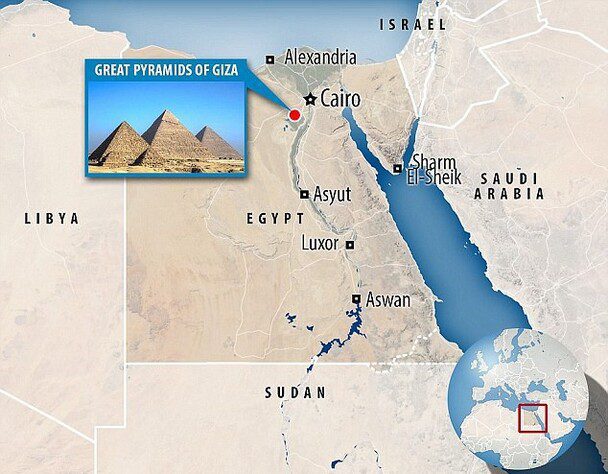Traditional Egyptian neighbourhoods in TV drama: From cultural beacon to fading identity
Over the past four decades, Egyptian television drama has undergone a profound transformation in the way it depicts the hāra — the traditional Egyptian neighbourhoods. Once portrayed by Naguib Mahfouz as a microcosm of Egyptian life, the neighbourhood reflected the country’s diverse social fabric, especially its middle class, long seen as the nation’s moral anchor.
Series such as The Trilogy (Bayn El-Qasrayn, Qasr El-Shouq, and El-Sukkariyya) and “Hadith El-Sabah wal-Masaa” captured this essence vividly. Through such works, television presented the Egyptian man as noble, generous, loyal to family and neighbours, and deeply devoted to his country — a model that inspired generations and transmitted enduring virtues.
Later productions such as Arabesque by the late Osama Anwar Okasha carried this legacy forward. Its protagonist, Hassan Arabesque, epitomised the authentic Egyptian craftsman: brave in hardship, selfless with family, and compassionate in crisis. His flaws, too, were honestly portrayed, lending his character rare human depth.
Series like “El-Mal wal-Banoon” and “Souq El-Asr” further enriched this tradition, immortalising performances by Ahmed Abdelaziz and Kamal Abu Raya — performances that continue to resonate today across social media.
But as the new millennium unfolded, something changed. While works such as “Bayn El-Sarayat,” “Ramadan Kareem,” and “El-Akh El-Kabeer” retained a degree of authenticity, the modern hāra on screen has increasingly become a place of thuggery, moral decay, and ignorance — as seen in “El-Ostoura,” “El-Prince,” “El-Ataoula,” “Esh Esh,” and “Sayed El-Nas.”
This begs an urgent question: does this grim portrayal reflect Egypt’s social reality, or has television drama itself drifted from its cultural mission?


Negligence of Egyptian popular neighbourhoods
Writer and critic Samir El-Gammal described Egypt’s popular neighbourhoods as the cradle of its greatest thinkers and artists — from Naguib Mahfouz and Mohamed Abdel Wahab to Umm Kulthum, Abdel Halim Hafez, Sayed Darwish, and Nobel laureate Ahmed Zewail.
“These neighbourhoods were once portrayed with dignity in works that live on in the nation’s collective memory,” he said. “Older dramas captured the full social spectrum — the teacher, the craftsman, the dreamer, even the criminal — and did so with honesty and balance.”
El-Gammal cited “El-Shahd wal-Domou” as an example: “Zeinab, a mother raising her children in a humble neighbourhood, teaches them integrity and perseverance, and they grow to surpass their privileged relatives.” Likewise, “Layali El-Helmeya” offered “an artistic chronicle of Egypt’s evolving identity — from Al-Badri Abu El-Ezz to Zeinhem El-Samahy and the dancer Smasem — a full social mosaic of modern Egyptian life.”
He continued: “Such works preserved our national identity and transmitted moral values across generations. Today, however, the hāra is portrayed as a den of criminals and drug dealers, with the decent, educated, and hardworking figures erased. This is a grave injustice to Egypt’s popular quarters.”
“In Ramadan 2025, television screens were dominated by tyrannical characters — Hakim Basha, Sayed El-Nas, El-Halangi — none of whom represent the real Egyptian neighbourhood. The tragedy is that young viewers begin to imitate what they see. Art should elevate the street, not mirror its worst traits. The street follows art — not the other way around.”
El-Gammal called this decline “a crime against the Egyptian neighbourhood,” urging writers to draw inspiration from masters like Youssef Idris, Youssef El-Qa’id, and Gamal El-Ghitani, who “used art to enlighten, not degrade, their audiences.”






Timeless Neighbourhood of Layali El-Helmeya
Critic Ahmed El-Naggar regards Layali El-Helmeya as television’s finest portrayal of the Egyptian popular neighbourhood. “It encompassed every social stratum — from the aristocrats to the middle class to the humble neighbourhood dwellers like Zeinhem El-Samahy,” he said.
“The set design was breathtakingly authentic — the mashrabiyas, the local cafés, the rhythm of daily life — but what truly defined it were the human relationships. Zeinhem embodied honour and courage, defending his community with a deep sense of patriotism. One unforgettable scene shows his wife’s misunderstanding with Anisa, Hassan Youssef’s wife, where propriety and social etiquette are observed with touching precision — a moral code that has since disappeared from our screens.”
El-Naggar lamented that modern depictions have replaced these vibrant neighbourhoods with soulless concrete blocks. “The popular neighbourhood has lost its essence — the solidarity, decency, and dialogue that once defined it. The strong have become bullies; justice has turned into vengeance.”
He attributed this decline to a shift in writers’ approaches: “Writers of the past were true intellectuals. They lived among the people they wrote about. Today, many rely on imagination alone — claiming realism while distorting reality. Drama should refine life, not merely replicate it.”
“The responsibility,” he concluded, “lies with both the writer and the director. They are the custodians of our social image.”


A Call to Improve the TV Drama
Screenwriter Magdy Saber described Egyptian drama as “a faithful ambassador for the Egyptian people — portraying them as warm, dignified, and humane.”
“It taught generations what it means to be a true man: to respect neighbours, protect one’s family, and stand by the women of the neighbourhood,” he said.
Saber paid tribute to the pioneers who immortalised the spirit of the hāra — “from Naguib Mahfouz, whose affection for the popular neighbourhoods won him a Nobel Prize, to Osama Anwar Okasha, whose “Layali El-Helmeya” and “Arabesque” captured the emotional and cultural richness of Egypt.”


He urged contemporary creators to “purge our screens of distorted images that misrepresent who we are” and to produce works that “uplift rather than corrupt the youth.”
He concluded with optimism: “We long for a renaissance of the Egyptian neighbourhoods on screen — one that reclaims its dignity and reflects the true essence of our people.”
The post Traditional Egyptian neighbourhoods in TV drama: From cultural beacon to fading identity first appeared on Dailynewsegypt.




